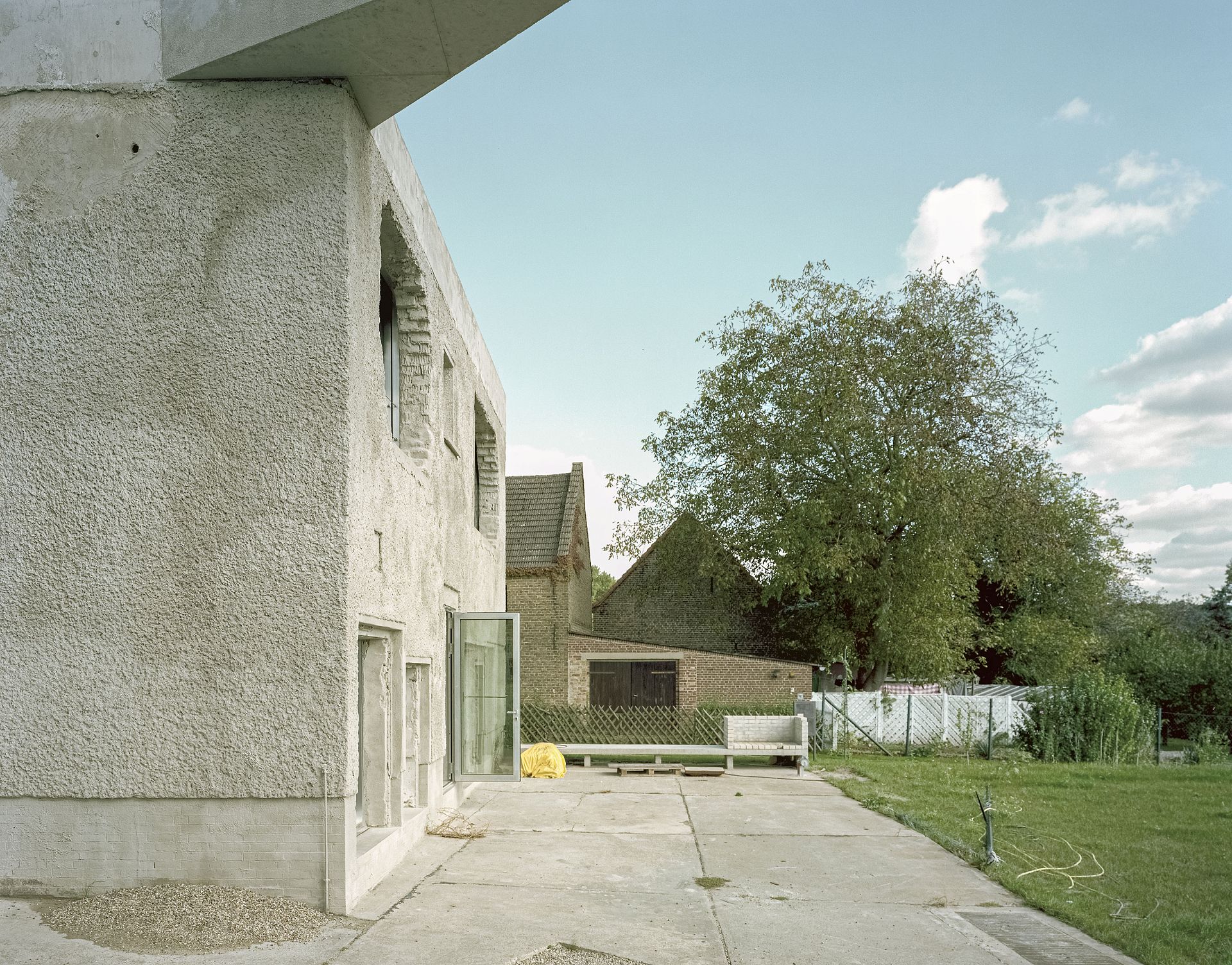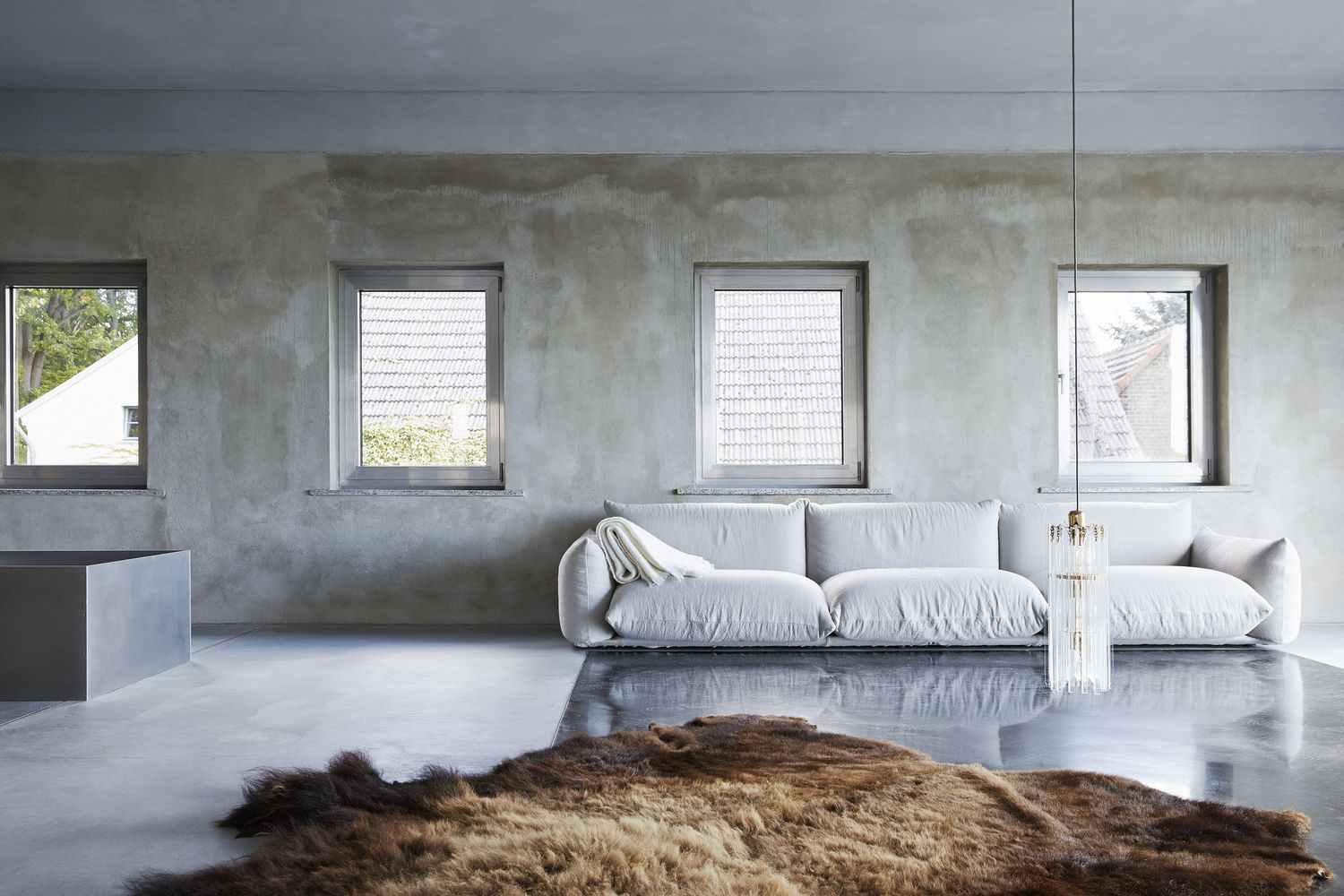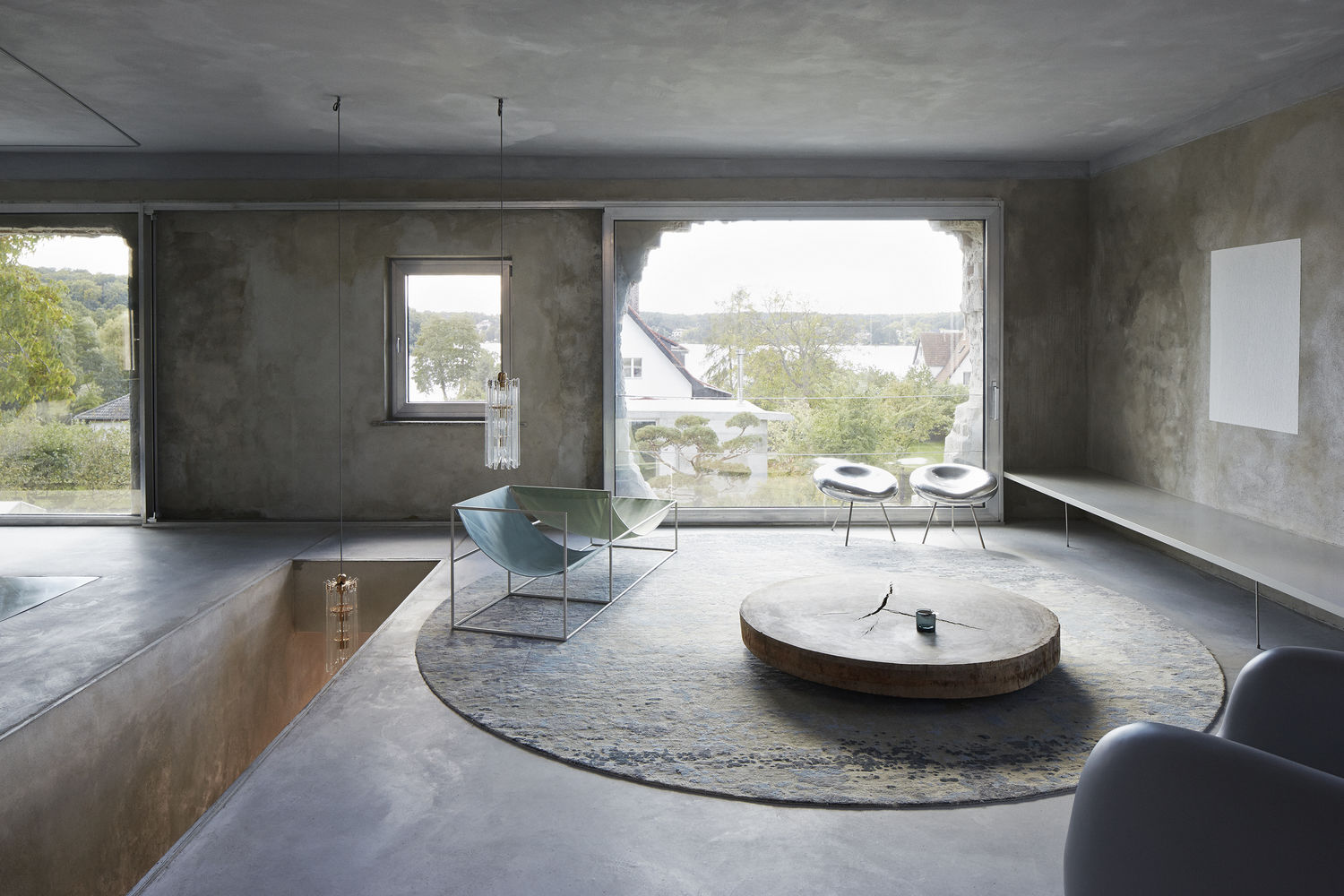
Antivilla / Arno Brandlhuber
The renovation of the Ernst Lück lingerie factory in the former GDR—besides the Krampnitzsee, southwest of Berlin—is not a mere physical upgrade of the outer shell. Instead, it questions the mandatory standards in current building regulations by proposing a new understanding of architecture and the environment. The abandoned 500-square-meter building was not appealing to future investors due to the high demolition costs. In addition, the regulation states that any demolished building could only be rebuilt with 100 square meters of living space, 20 percent of the existing volume. Demolition therefore would have caused a massive loss of energy in terms of both labor and material. The concept thus contains a number of selective measures that permit its new usage as a studio and a residential building.
Architects: Arno Brandlhuber
Location: Krampnitz, Potsdam, Germany
Photography: Simon Watson


The gable roof, which contained asbestos, was removed and replaced with a newly designed one. All non-load-bearing partitions were removed and replaced with a central concrete core to support this new roof. The core, containing a bathroom, kitchen, and spaces for a sauna and a fireplace, was inserted on the second floor. The adjoining maintenance stairway gives access to the roof via a hydraulic roof hatch. On the ground floor, the three spaces originally used for deliveries, storage, and garage were kept structurally the same. The new roof, constructed with a two percent slope and water-resistant concrete, is supported by the core and a continuous beam, which allows for up to five-meter wide openings in the existing walls. These large openings express the physical presence of the existing structure. The original window openings on the two long sides of the house were kept exactly the same. Inspired by Claude Faraldo’s experimental film Themroc (1973), big holes were punched into the walls facing the lake and forest, replacing the existing windows on that facade, to gain maximum openness and exposure to the landscape. To celebrate this, a mobile kitchen was set up and friends were invited to the construction site to collectively punch out holes for the windows.



The interior space is characterized by monochromatic surfaces. The original brick structure, which had been plastered over with a fine grey mortar, was preserved in the new interior. Similarly, the exterior surface, originally constructed with a rough plaster, was simply sealed using grey lime sludge. The traces of the old building, therefore, remain in its new iteration, visible in the varying shades of grey and textures. The building is not insulated, except for the new roof, which contains a layer of insulation. To fulfill the German energy regulations, the upper level was divided into different climatic zones that were calculated separately. Geothermal pipes in the floor provide basic heating to ensure the required minimum. In addition, a sauna stove functions as the space’s supplemental heating point, around which translucent curtains can be drawn to create warmer zones during especially cold months. In winter, the heated space shrinks to a core area of approximately 70 square meters; in warmer seasons, it can expand accordingly, increasing the usable surface up to 250 square meters. The curtains, therefore, preserve the generous spatial impression, while allowing flexible climatic conditions. Thus, the structural and heating systems in the Antivilla rethink Reyner Banham’s concept of The Architecture of the Well-Tempered Environment (1969), combining his two distinct principles of generating space: the constructional aspect and the energy aspect.







1 thought on “Antivilla / Arno Brandlhuber”
Comments are closed.